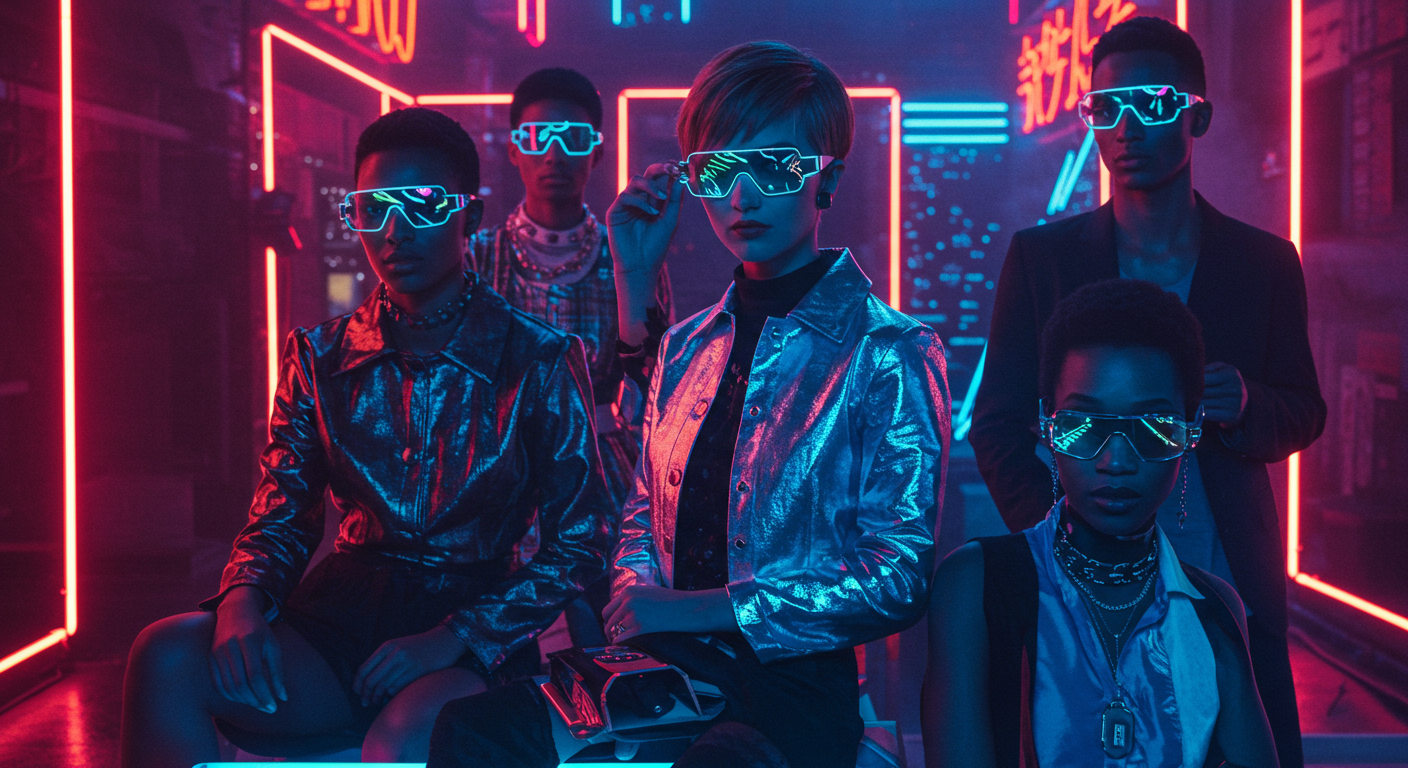Pop Culture’s New Aesthetic: The Rise of Retro-Futurism in Fashion
Definition of Retro-Futurism
Retro-futurism is a cultural movement that combines nostalgic elements of the past with futuristic visions, focusing on how people in previous eras envisioned the future. It offers a stylistic blend of vintage aesthetics from the mid-20th century—especially the 1960s and 1970s—with modern interpretations of technology and design. This cultural and artistic phenomenon captures the imagination through fashion, music, art, and design, creating a whimsical yet reflective narrative about both our history and future possibilities.
Historical Context of Retro-Futurism
Retro-futurism can be traced back to World War II, fueled by technological optimism during the post-war boom. The Jet Age instilled in society a longing for a utopian, tech-driven future, reflected in various art forms, literature, and cinema, such as “The Jetsons” and iconic sci-fi films. However, Retro-futurism as a fashion statement began to gain traction in the early 2000s, largely influenced by the visual aesthetics of early digital art, comic books, and the space race.
The Role of Film and Media in Shaping Retro-Futurism
Film and television have played a significant role in the rise of retro-futurism in fashion. The nostalgic designs of movies like “Blade Runner,” “Back to the Future,” and “Space Odyssey 2001” showcase a distinct vision of the future, inspired partly by the fashion trends of their respective eras. Moreover, recent films such as “Stranger Things” and “The Umbrella Academy” have reinforced this aesthetic, utilizing a combination of 1980s nostalgia and futuristic elements, accelerating its acceptance and incorporation into modern fashion.
Key Elements of Retro-Futuristic Fashion
Retro-futuristic fashion is characterized by its vibrant colors, geometric shapes, and innovative materials. The essential components of this trend include:
-
Bold Color Palettes: Expect to see daring combinations of colors, such as neon pinks, electric blues, and metallic golds that create an eye-catching look. These colors are reminiscent of old sci-fi graphics, where bright hues were commonly used to represent advanced technologies.
-
Space-Age Silhouettes: The iconic silhouettes, from form-fitting astronaut suits to oversized jackets inspired by the 80s, dominate the retro-futuristic aesthetic. Structured shoulders and voluminous shapes reflect the confidence of the era, creating outfits that stand out.
-
Innovative Fabrics: Materials that evoke a sense of futurism, like metallic sheens, vinyl, and other synthetic fabrics, are crucial to the retro-futuristic style. These materials not only emphasize a space-age feel but also nod to the experimental spirit of past eras.
- Iconic Accessories: Accessories such as oversized sunglasses, geometric jewelry, and platform shoes offer the finishing touches that define this aesthetic. They add a playful touch of whimsy that connects back to the vision of a bright, technologically advanced future.
Influential Designers and Brands
Several designers and fashion brands have played pivotal roles in popularizing retro-futurism in their collections.
-
Kanye West: While known for pushing various boundaries, his Yeezy collections encapsulate a minimalist yet futuristic ethos, blending muted tones with experimental silhouettes.
-
Gucci: Under the leadership of Alessandro Michele, Gucci has revived retro styling with a contemporary twist, incorporating bold colors and vintage patterns that evoke 70s and 80s aesthetics in their designs.
-
Miu Miu: This brand successfully combines nostalgic elements of the past with modern cuts, turning heads with outfits that look both familiar and distinctly avant-garde.
- Dior: The House of Dior often echoes the vintage silhouettes of the 1960s, reworking them through varying fabric choices and contemporary styles, suitable for today’s fashionistas.
The Impact of Social Media and Influencers
Social media platforms like Instagram and TikTok have played an instrumental role in the rise of retro-futurism. Influencers capitalize on this trend by showcasing outfits that encapsulate the charm of bygone eras mixed with cutting-edge design. Hashtags like #RetroFuturism and #SpaceAgeFashion bring together communities of like-minded individuals who celebrate this creative fusion of the past and the future.
Streaming platforms have also contributed to the trend’s popularity, as binge-worthy series often curate specific aesthetic vibes that resonate with viewers. Users replicate entire looks inspired by characters, which often reveals a blend of retro and futuristic couture.
Art and Design Influences
Beyond fashion, retro-futurism has permeated other art forms, influencing graphic design, architecture, and even urban planning. Cities like Las Vegas, with their neon-lit signage and mid-century modern buildings, provide a snapshot of this aesthetic in urban environments. Illustration artists often take cues from retro-futuristic styles, using bold colors, intricate line work, and surreal landscapes in their creations.
Retro-Futurism in Music Culture
Music genres such as synth-pop, vaporwave, and even some aspects of electronic dance music have roots in retro-futurism. The soundscape combines nostalgic melodies with modern production techniques, further accentuating the concept of looking back while simultaneously moving forward. Artists such as Grimes and The Weeknd often incorporate retro-futuristic themes in their work, marrying experimental sounds with visual aesthetics reminiscent of mid-20th-century expectations of the future.
Challenges and Criticisms of Retro-Futurism
Despite its growing popularity, retro-futurism faces criticism for its sometimes superficiality, harkening back to idealized pasts that had their own problems, such as socio-economic disparities and cultural issues. Moreover, while the aesthetic may be thought-provoking and artistically captivating, critics argue that it can gloss over the complexities of the present and future challenges.
Additionally, the trend can perpetuate consumerism, with fast fashion brands quickly replicating retro-futuristic styles without ethical production practices. The rising concern about sustainability in fashion beckons for a more responsible approach that can marry the love of retro-futurism with longevity and care for the environment.
Conclusion
Retro-futurism has transcended mere fashion to become a multidimensional cultural phenomenon, blending art, music, and lifestyle into a cohesive aesthetic. As it continues to evolve, it inspires creativity, challenges historical perceptions, and invites a playful exploration into what the future holds while simultaneously celebrating the past. Its resurgence serves as a reminder that nostalgia can provide both comfort and imaginative potential.




